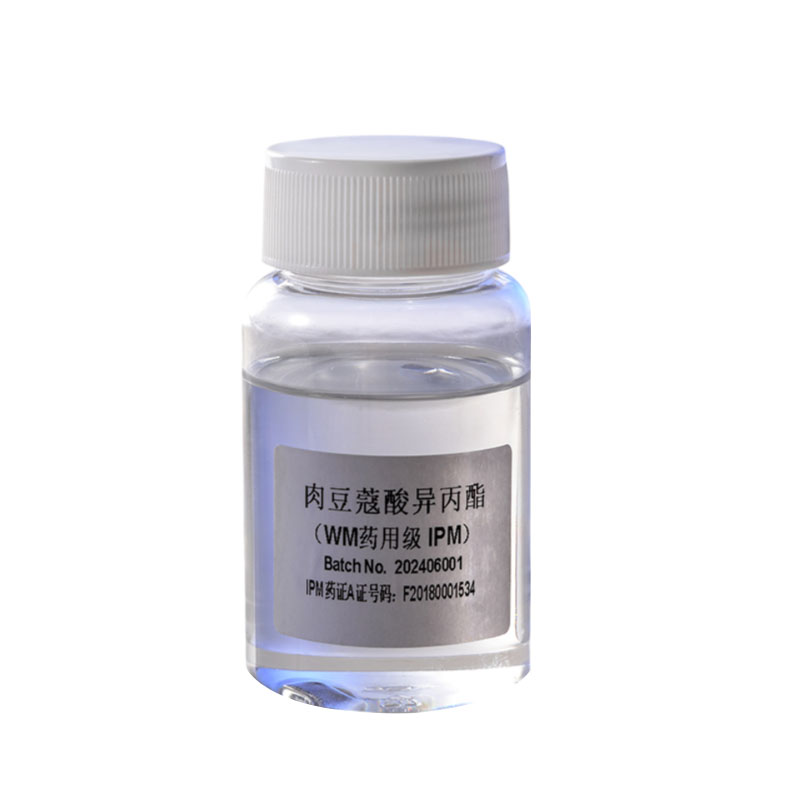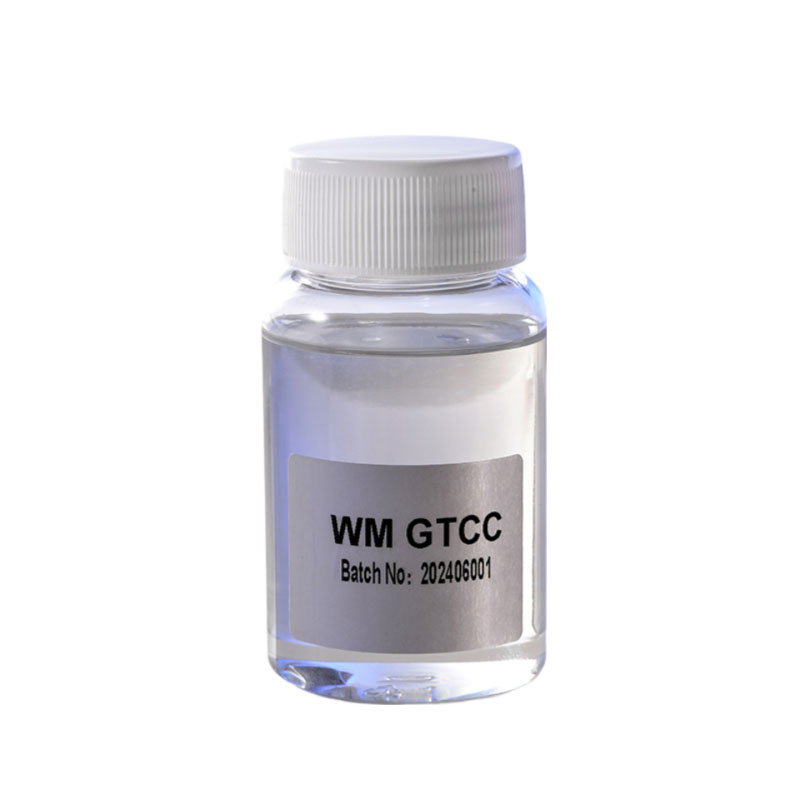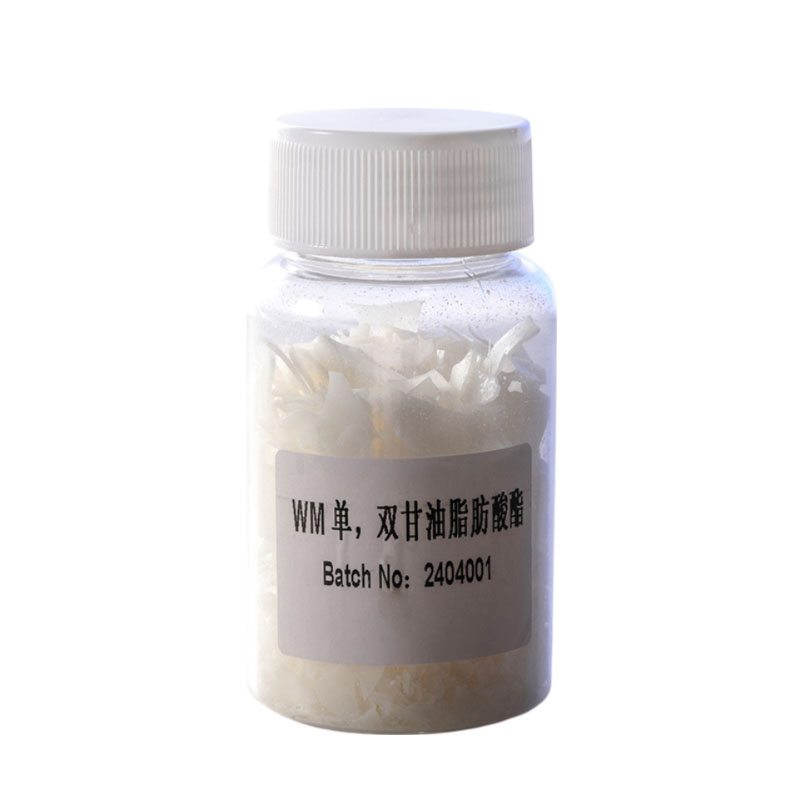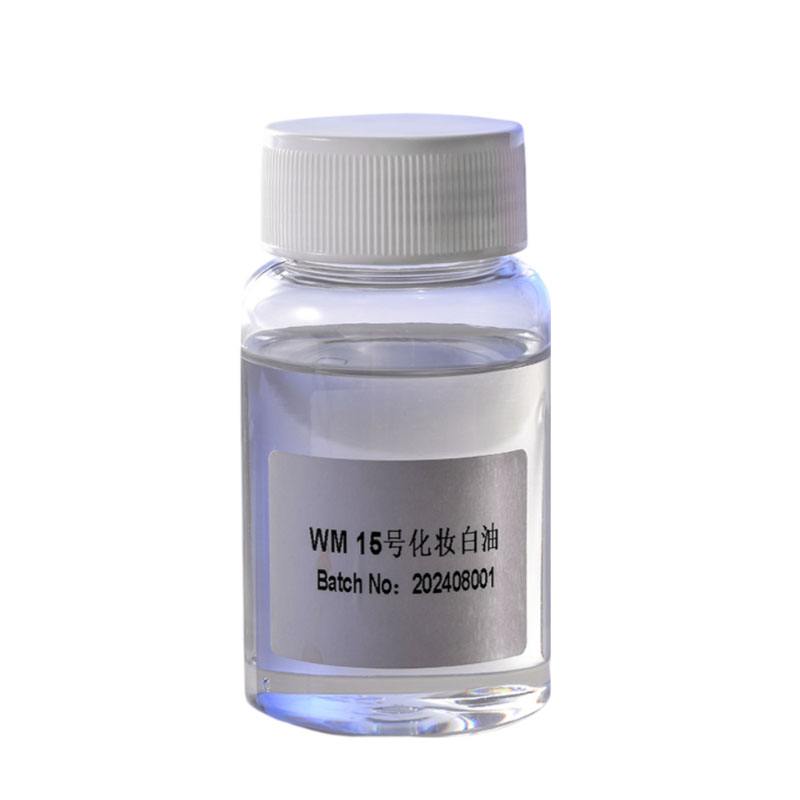What is the application principle of food-grade raw material monoglyceride in dairy products?
Release Time : 2025-11-24
The application of food-grade monoglycerides in dairy products is primarily based on their unique molecular structure and multiple functional properties, including emulsification, stabilization, and anti-oxidation. As a nonionic surfactant, the monoglyceride molecule consists of a lipophilic long-chain fatty acid group and two hydrophilic hydroxyl groups. This structure allows it to interact with both oil and water simultaneously, playing a crucial role in dairy products.
In dairy production, the uniform dispersion of fat and water is a core factor determining product quality. For example, in milk or yogurt, if fat is not fully emulsified, it easily forms large fat globules, leading to product layering, a rough texture, and even fat sedimentation. Food-grade monoglycerides reduce the interfacial tension between oil and water, allowing fat globules to be uniformly encapsulated and stably dispersed in the aqueous phase, forming a smooth emulsion. This emulsification not only improves the uniformity of the dairy product's texture but also prevents fat from re-aggregating during storage, thus extending the product's shelf life.
For example, ice cream production requires extremely high emulsification stability. In ice cream mixes, monoglycerides promote the interaction between fat and protein, forming a stable network structure. This structure controls fat aggregation and coagulation, preventing excessive ice crystal growth, and also improves the foaming and expansion properties of ice cream. During freezing, monoglycerides inhibit the formation of large ice crystals, giving ice cream a fine texture and preventing shrinkage and deformation caused by ice crystal recrystallization during storage. Ultimately, the ice cream has a smoother texture and significantly improved shape stability.
The stabilizing role of monoglycerides is equally crucial in dairy products such as cream and cheese. If fat globules in cream are not fully emulsified, they are prone to separation during storage or processing, leading to product layering or hardening. Monoglycerides prevent fat leakage by forming a stable interfacial film, maintaining the cream's fine structure and uniform appearance. For cheese, monoglycerides improve its texture, making it softer and moister, while delaying starch retrogradation and maintaining the product's elasticity and viscosity during storage. For example, in spreadable cheeses, the addition of monoglycerides significantly improves the spreadability of the product, enhancing the consumer experience.
Antioxidant properties are another important function of monoglycerides in dairy products. Dairy fats are susceptible to oxidation from oxygen and light, leading to rancidity, off-flavors, and even reduced nutritional value. Monoglycerides, through mechanisms such as chelating metal ions and scavenging free radicals, inhibit the chain reaction of fat oxidation, thereby extending the shelf life of dairy products. For example, in dairy beverages, the antioxidant properties of monoglycerides prevent color darkening and taste deterioration caused by fat oxidation, maintaining stable sensory quality.
Furthermore, monoglycerides' application in dairy products also contributes to the stability of foam structures. In whipped cream or certain fermented dairy products, monoglycerides work synergistically with proteins to form a stable foam network, preventing foam breakage or over-expansion. This property makes dairy products easier to handle during processing, optimizing the final product's appearance and taste.
From a safety perspective, food-grade monoglycerides are typically made from natural vegetable oils, purified through rigorous processes, and meet national food safety standards. Their addition to dairy products is scientifically evaluated to ensure no adverse effects on human health. Most of the monoglycerides ingested in our daily diet are broken down by the body into glycerol and fatty acids, which are then metabolized into energy or synthesized into other physiologically active substances. There is no need to worry excessively about safety issues.









